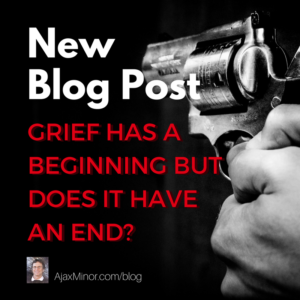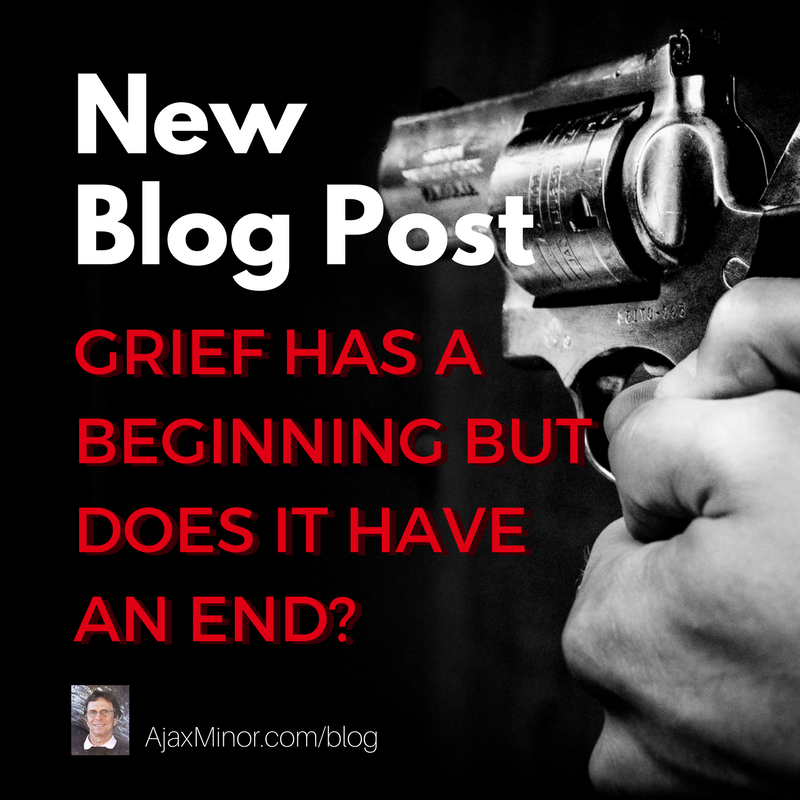Katie would have been 26 last month. There is truth in the expression that Time heals all wounds.
There is an intellectual side to Grief. We explored that last week in a repost of Grief, God and Lao Tsu. When tragedy strikes we always ask why. I hope there may have been the beginnings of some answers from Rabbi Kushner and Lao Tse there.
 This week we discuss the emotional process and dealing with Grief in our daily lives. What the loved ones of those who died in the massacre in Parkland, FL had to endure is unspeakable but not unique. Not unique because of the endless string of shootings over the past few years but because we all have suffered the loss of friends and family in our lives. Even the loss of one person sets in process the same emotional and intellectual responses.
This week we discuss the emotional process and dealing with Grief in our daily lives. What the loved ones of those who died in the massacre in Parkland, FL had to endure is unspeakable but not unique. Not unique because of the endless string of shootings over the past few years but because we all have suffered the loss of friends and family in our lives. Even the loss of one person sets in process the same emotional and intellectual responses.
Grief is perhaps the most brutal of emotions. Not because it is more intense than others. Certainly fear can be more immediately overwhelming. But Grief is a chronic state. It is a response to Loss. Not simply the loss of a wallet, or a set of keys, but something irreplaceable and irretrievable. The object of that Loss is usually, though not always, the death of a living and loved soul. While anger, as an example, is explosive, Grief is implosive. It digs its nails into your very surroundings, the air you breathe, then into your skin and collapses every scrap of being to a point in your core that is the seat of your Self. It is a reaction to tragedy that is ripping in its intensity. It is emotional fusion, not fission, and it crams the self into a space so dense that you cannot help but be sucked in.
The question then becomes, can you crawl out of grief? The answer is yes. But it will draw on all of your emotional and intellectual resources. It will make you reach back and grope for strength in your personal history. It will challenge you and reshape your beliefs about the world and about yourself.
My wife, Linda, and I, as most of you know who follow this blog or have read my books, lost our daughter, Katherine, to a birth accident. It appeared that her umbilical cord had been too short, and when she turned it cut off the supply of oxygen to her brain. Ghastly.
Katherine died seven months after birth. The spaces that filled her brain, left by tissue that had been starved of oxygen and had died, filled with dense spinal fluid and simply became more than her brainstem, seat of the autonomic functions, could bear. Her heart just stopped.
Katie would have been 26 last month. It’s said that Time heals all wounds. There is truth in that expression. For the first few years after her death we would always open the morning of February 12 with the comment: ‘It’s Katie’s birthday’. Then, maybe a decade ago, one of us mentioned her birthday and the other exclaimed: ‘I forgot!’. Did we care any less? NO. But Time does lessen the pain, even if it does not eliminate it.
What did we do in all of those intervening dates between birthdays? Her life had ended, but ours had not. We had to live. But how? First was to answer the question ‘why?’. For us we found an answer in the words of an ancient Asian sage, Lao-Tse:
‘Nature does not play favorites. She regards her creations without sentimentality.’
Others seek comfort in God, some unfortunately in drugs and alcohol. Because there is no good answer to the question, ‘why?’.
Linda and I had to get in synch emotionally. If you are a parent, you will have to confront this fact. Grieving is differential. Highs, if there are any, usually are just a brief respite; and lows are rarely coincident in time. People grieve, as people walk, at their own pace. Linda had sat up every night while Katie was alive and poured her heart and her guts out in a flood of tears. I had simply been ‘dad’. But after Katherine died it was time for me to start to comb through the catastrophe for some meaning. Linda was ahead of me and because of love, she waited patiently for me to catch up. Understand, the pain never goes away completely. Ever. But our stoic view helped us. That and, surprisingly, black humor. Some of us need bluebirds and some of us like blackbirds, I guess.
Linda and I had taken Katie to a school for blind children, infant to pre-school. Since she was so horribly compromised, the therapy there and at home probably did us more good than it did her, as we massaged her tortured muscles and sat in a dark room while colored lights blinked away on a small device.
Then, Linda took her considerable financial skills from a career on Wall Street and poured them into the school. I’d like to think her effort, over fifteen years, did some good. I, on the other hand, had a flash of inspiration. I decided to write a story. The short story became a long novel that eventually became a series of novels. I gave my daughter a life in them that she’d been robbed of. Of course, they were fantasy, so I could actually give her life on the page. That’s the beauty of fantasy. One can fashion make believe and make it believable.
So the question becomes, can art be a balm for Grief and if so how?
There are countless instances of art dealing with the subject of grief.
- Sculpture: the Pieta and a Mother’s outpouring of not only grief but also love into the dead body of her son, in a gesture of pure ‘agape’, unconditional love.
- Plays: Trojan Women by Euripedes, exploring the grief of women who have lost sons, husbands and their home; Grief in bitter resignation.
- Books: the Mockingjay series, Grief transformed into action. And Uncle Tom’s Cabin, Grief shaped by love.
- Poetry: Galway Kinnell’s ‘Neverland,’ Grief expressed as helplessness.
An English teacher of mine in high school wisely noted that there is no ‘correct’ interpretation of a work of literature, or of any work of art, for that matter. Because there is the artist’s intent and the inferences made by the audience. Both are valid.
In my art, my books, Grief morphed into joy. The joy of fashioning a life out of words. I am still astounded, when I read certain passages of Sun Valley Moon Mountains, what a special person ‘my daughter’ Ur is. And I am even more moved by her as a young woman in The Girl from Ipanema.
I write with an old fashioned fountain pen because it moves effortlessly across the paper, never tiring my hand, as my mind pours out thoughts that are soaked in ink and the nib glides across the page.
But what of my audience? What’s in it for them? As much as I have wanted to create another existence for Katie, I’ve also tried to show people, especially those who can empathize with our Grief, that there is another way of viewing the tragedy as a function of a universe that is not malevolent, nor even cold, but simple a universe that ‘is’. The ‘why?’ of it all need not be an instrument of torture.
So my advice to those who are members of our grisly club is to stop asking ‘why?’, because there is no satisfying answer; but to pick up a brush and some paints and a canvas, or a piece of chalk, or a lump of clay, or a pen. Pick up a block of wood and fashion it, if you have that talent. Or simply open a recipe book and cook, if that’s a talent that moves you. Or open an Excel spreadsheet, as Linda did, and give back. As Achilles said to Priam, who came seeking the body of his son, Hector, in the Iliad, “eat”, for the living, as much as they grieve their loss, must still get on with the business of living.
I would like to close with one more thought, which sustained Linda and me:
First, things could always be worse.
And Second, there is always someone who has it worse than you do.


Loosing my daughter dale After having her for over sixty years. Is just as bad for me. I still feel like you and Linda. It does not matter how long you have them. It is losing them. They are still in our hearts. And always will be. !!god. Bless